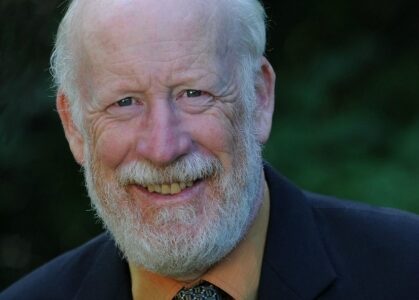Concerns raised over potential logging in Glacier Creek watershed
Concerns have been raised regarding the environmental impact of a proposed logging venture in the Glacier Creek watershed.
Gabriela Grabowsky, a landowner in the Glacier Creek region, alerted objectors to the new logging blocks in an effort to raise awareness about the situation.
The proposed development area in Glacier Creek is located west of the Macbeth trailhead area and is nowhere near the icefields in the contentious Jumbo Valley, an area that has seen much controversy and protest over the last two decades.
A ministry representative told The Nelson Daily that the land currently planned for development is “approximately two percent of the entire Glacier Creek watershed.
The proposal is located at the front of the drainage and is not directly adjacent to Glacier Creek.”
According to a press release from MAA Press, the Forest Service had informed the landowner [Grabowsky] but “has no obligation to make plans to the general public”.
However, while BCTS has no legal obligation to make development plans available to the general public, BCTS-Kootenay posts all plans on their website at: https://www.for.gov.bc.ca/BCTS/areas/TKO.htm (Click on “Forest Stewardship Plan” > “Kootenay Lake Forest District FSP” > “FSP Documentation and Maps” https://www.for.gov.bc.ca/ftp/TKO/external/!publish/FSP/FSP-2011-2016/Kootenay-Lake-FSP/)
The major concern for locals, environmentalists and people who use the area recreationally isn’t necessarily the logging itself, but the cumulative environmental impact from multiple acts of construction and resource extraction.
“If there was no Jumbo Glacier Resort with 2000 people [new plan] coming just across Jumbo Pass from this, we’d say ‘okay, that’s logging and we don’t like it’, but our concern is that we keep layering on all of these impacts without looking at the cumulative impact of all of it,” said K. L. Kivi, a Kootenay region environmental activist.
Kivi went on to explain that the combination of multiple ventures is creating a situation larger than each individual effort, and this new logging proposal might be the straw that broke the camel’s back.
However, the ministry said that planning around these effects is important to BC Timber Sales, and highly trained professionals have conducted various assessments to provide science-based recommendations.
These assessments include: terrain stability; avalanche risk; hydrology; fish, wildlife and riparian habitat; forest health; and soil. Timber value, public use, recreation values, operational logistics and safety will also factor into the plans.
“In consideration of future conditions, such as climate change, note that the Glacier Creek proposal will incorporate measures adapted for this transition in both the silviculture and engineering aspects of the plan,” said a ministry representative.
Kivi said that legally, BC Timber Sales are well within their rights to log there and have an annual allowable cut of 183,000 cubic metres per year.
But the ministry has said harvesting of cutblocks will be timed incrementally over the course of 10-15 years, allowing for green-up and stocking of directly adjacent blocks.
However, she continued to press her worries about the bigger picture.
“Our concern is not so much that the Kootenay Lakes Forest District is doing something wrong, it’s a much higher level political will that we’re looking at, which is that this government does not look at the cumulative impact of all development in an area,” she said.
“Mining does the mining thing, forestry does the forestry thing and recreation does the recreation thing and they give a license to the Jumbo Glacier resort to do their thing in the adjacent valley; they don’t ever take a look at the whole area and think “is this too much.”
The ministry said that there are several ways in which stakeholders and public who provide site-specific concerns or other information can influence the plans, including timing or scheduling of harvest; block shape and size; and placement of reserve timber for the protection of specific wildlife or other unique features.
The opportunity for public input officially ends (Monday) February 8, and Kivi encourages anyone who shares similar concerns should voice them to the Kootenay Lakes Forestry District and the Ministry of Forests.
“There are a lot of people who are very engaged in Jumbo Wild and the whole Glacier Creek area both as recreationalists and environmentalists. I think there will be a lot of opposition,” she said.
“People care about what happens up there and I think they will respond, whether they will collectively change what’s happening there remains to be seen. That same group of people has kept Glacier Resort from building anything in Jumbo for 25 years, so I think collectively we have a lot of will,” said Kivi.
In response to these concerns, the FLNRO expressed a desire to work with the public and explained that without development plans like this, there wouldn’t be much access for recreationalists.
“In the case of Glacier Creek, BCTS has encouraged all parties to embrace the concept of working together to manage high-value recreation within a working forest. According to BCTS staff, most of the public feedback acknowledges that backcountry access to recreation opportunities is not possible without industrial development.”
BCTS has said it has not withheld any planning information, and has already met with concerned public groups and e-mailed requested info to others.
Story originated at The Nelson Daily























